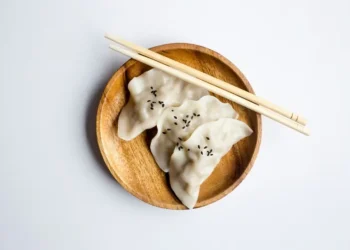The Relationship Between Class and Food Consumption
In sociology, the concept of social class plays a significant role in understanding various aspects of society, including food consumption patterns. The relationship between class and food consumption is complex and multifaceted, influenced by factors such as income, education, cultural capital, and social networks. This article explores how social class impacts food choices, access to nutritious food, and the symbolic meanings attached to food within different social classes.
1. Class and Food Choices
One of the primary ways in which social class influences food consumption is through the choices individuals make regarding what they eat. People from different social classes tend to have distinct food preferences, influenced by their upbringing, cultural background, and economic resources.
Individuals from higher social classes often have more disposable income, allowing them to afford a wider range of food options. They may choose to consume organic, locally sourced, or gourmet foods, which are often associated with health, quality, and status. On the other hand, individuals from lower social classes may have limited financial resources, leading them to rely on cheaper, processed foods that are often high in calories and low in nutritional value.
Education also plays a role in shaping food choices. Higher levels of education are associated with greater knowledge about nutrition and health, leading individuals to make more informed decisions about their diet. Consequently, individuals from higher social classes are more likely to engage in healthy eating habits and prioritize fresh fruits, vegetables, and whole grains.
2. Class and Food Access
Another crucial aspect of the relationship between class and food consumption is access to nutritious food. Food access is influenced by various factors, including geographical location, income level, and social networks.
Individuals from lower social classes often face greater challenges in accessing healthy and affordable food. They may live in areas with limited grocery store options, known as food deserts, where fresh produce and nutritious food are scarce. In contrast, individuals from higher social classes are more likely to live in areas with a wide range of food options, including specialty stores and farmers’ markets.
Income disparities also affect food access. Higher-income individuals can afford to shop at higher-end supermarkets that offer a wider variety of fresh and organic products. In contrast, lower-income individuals may rely on convenience stores or fast-food restaurants, where healthier options are often limited.
Additionally, social networks play a role in food access. Individuals from higher social classes may have connections to people who can provide information about healthy food options or share resources such as community gardens or food cooperatives. Lower-income individuals may have fewer social connections that can provide such support.
3. Symbolic Meanings of Food
Food is not only a source of sustenance but also carries symbolic meanings that vary across social classes. Different social classes attach different values and meanings to certain foods, which can influence food consumption patterns and choices.
For individuals from higher social classes, food choices often reflect their cultural capital and social status. Consuming certain foods, such as expensive wines or gourmet dishes, can serve as a way to display wealth, sophistication, and refinement. In contrast, individuals from lower social classes may attach different symbolic meanings to food, such as familiarity, comfort, and affordability.
Moreover, food can also serve as a marker of cultural identity. Different social classes may have distinct culinary traditions and preferences, shaped by their cultural background and heritage. For example, individuals from higher social classes may prioritize international cuisines or fusion dishes, while those from lower social classes may have a stronger attachment to traditional or regional foods.
Conclusion
The relationship between social class and food consumption is complex and influenced by various factors. From food choices to access and symbolic meanings, social class plays a significant role in shaping individuals’ dietary habits and preferences. Understanding this relationship is crucial for addressing issues of food inequality and promoting healthier food environments for all social classes.







